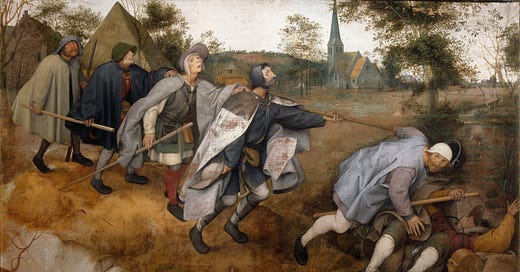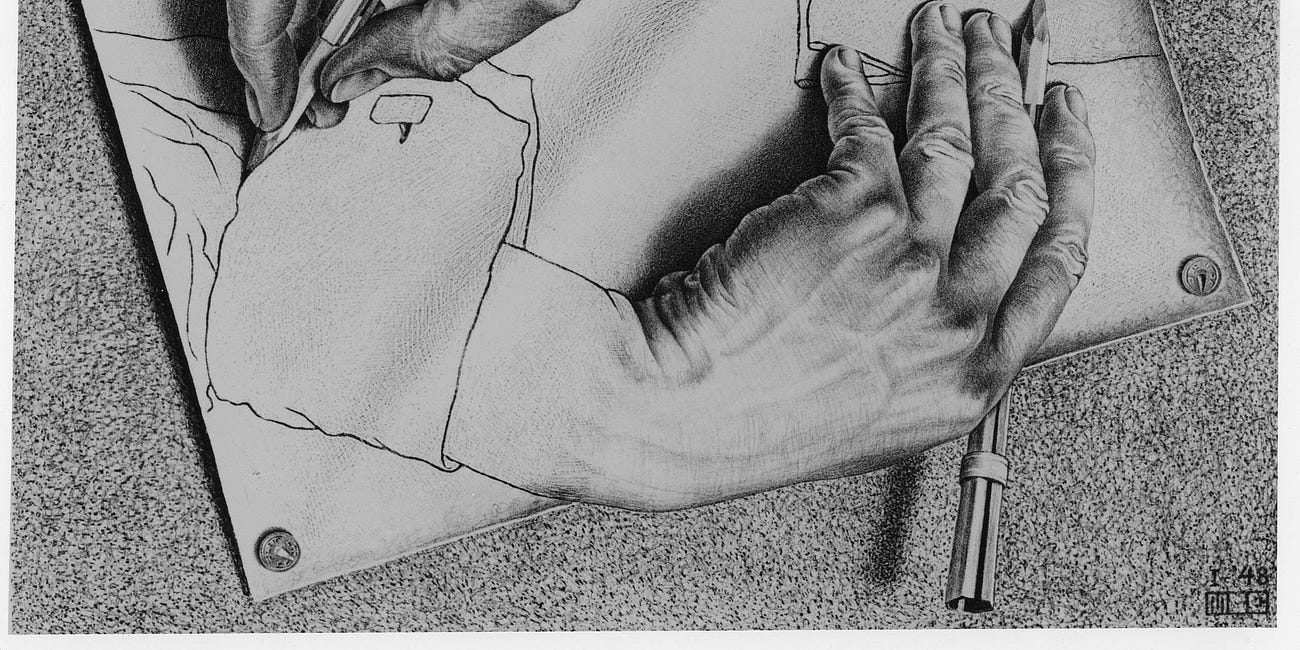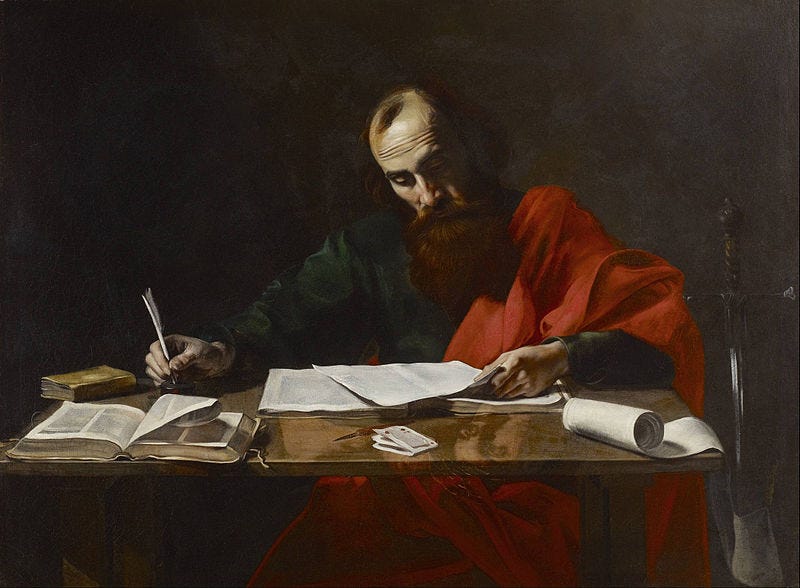2432 pages into Karl Ove Knausgaard’s autobiographical novel My Struggle comes a pivotal plot point: the publication of a new Proust translation in Norwegian.
Knausgaard, at this point in his mid-twenties, has spent nearly ten years learning to write. Without success, to put it mildly. His best friend, Tore Renberg, having read the results, in one scene comes over to Knausgaard’s flat, looking a little as if he has been drinking before he arrived to work up his nerve.
“But Karl Ove”, Renberg says about his writing, “there is… nothing there”.
This isn’t the first time we’ve seen how people react to Knausgaard’s prose. Earlier in the book, when he is working as a teacher in a remote fishing village in northern Norway, Knausgaard comes home to find his colleagues laughing while reading a sex scene he’s written. Knausgaard—still a virgin—walks straight through the kitchen into his study, where he downs a full bottle of wine in one go and proceeds to throw up all over the bookcase.
But Renberg’s criticism cuts deeper. Renberg, who is younger than Knausgaard, has already become an accomplished writer and knows what he’s talking about. There really is nothing there.
So Knausgaard stops writing. When the new translation of Prouts’s In Search of Lost Time is published he has not written for two years. In the spring light, he reads Proust’s memoirs, all seven of them, in one big gulp like “drinking a glass of water”. He has said it was like “visiting a wood you have been in before, a long time ago . . . and when you start walking, the memories start coming back”.
After that epiphany . . . he spends another two years not writing. That is about 200 pages of his autobiography.
Then, for inexplicable reasons, an editor at Tiden, a subsidiary of Norway’s biggest publishing house, an editor who, like everyone else, is unconvinced by Knausgaard’s writing, decides that, well, why not give him a book deal anyway. Knausgaard abandons everything, moves back to his mother’s town, Arendal, and sets out to write a debut novel. He doesn’t know what to write about. He overhears a conversation in the library, writes it down, and then wings it from there.
The novel turns into a story about a 26-year-old teacher, Henrik Vankel. Like many debuts, it is hard to not read as autobiographical—which becomes all the tenser as the plot centers on the sexual relationship Vankel has with his 13-year-old pupil Miriam in a small fishing village identical to the one where Knausgaard taught in northern Norway. The book was an immediate critical and financial success.
One reason for the success was that the writing is pure Proust. Coursing through every sentence of Ude af verden, like a virus, is the Proustian sensibility, the obsession with time and memory, the rich and clear language. Knausgaard claims he wasn’t aware of the influence at the time—but something about The Search for Lost Time had worked itself into him, rearranging his sensibilities. Over the two years when he did not write, his writing had transformed.
This is quite common for writers. Reading something powerful, the voice infects them. Sometimes this is a weakness, if the influence has not been transformed into something personal. But there is also no way around it: finding good influences is a prerequisite for writing well.
Some writers do this very deliberately. Werner Herzog will spend days reading the Poetic Edda and listening to classical music at full volume to get himself into what he calls an “ecstasy of language” before writing a script. John Frusciante, as we discussed in the last part of this series, does something similar when writing songs.
Let’s call this scraping good training data for your mind. It is an important skill. Too often neglected. When learning a new craft, it is tempting to first go after the tasks you need to master. You want to know how to structure your sentences, so you read Strunk and White. You want to figure out how to get better at searching Google Scholar, so you memorize boolean operators. This is important. But to get good at something—parenting, writing code, doing research—you also need to internalize examples of prime achievements in that field. Knowing how to find these examples is upstream of the tasks you need to master.
As Erasmus puts it in On the method of study:
it is not by learning rules that we acquire the power of speaking a language, but by daily intercourse with those accustomed to express themselves with exactness and refinement, and by the copious reading of the best authors.
In the First you shape your social graph; then it shapes you, we modeled human beings as nodes routing information in a social graph. (Erasmus just routed me the above quote from the Lord’s year 1511, and I routed it to you.) The quality of your output in this model can be thought of as a function of the nodes upstream of you. Before Knausgaard connected Proust to his graph, he was incapable of producing valuable literary output.
In other words: the quest for greatness can be reframed as a search problem. In a world of information abundance, how do you find good influences?
On the art of locating great gardens
Lately, with the baby growing up, my wife Johanna has settled her mind on the problem that is our garden. She knows little about gardens. Her being more deliberate about how she learns than I am, I’ve been keeping notes about how she approaches it.
First, like a mortal, Johanna leafed through garden books in the library. She peeked over fences in the village, googled flower combinations, and searched Instagram for inspiration. I would have stopped there. (Or worse, I might have gone the way of a poet I once knew, who, when walking past a library scoffed, “Books! I don’t need books! I have my poems!” Which turned out to be a fabulous way to write bad poetry.)
Yes, Johanna says, you can find beautiful gardens by googling. But not having a good sense of the domain, you cannot judge if the gardens are anything near as good as they can be.
To get a better entry point into the culture of gardening, Johanna shifted her focus away from gardens in themselves. Going meta, she instead looked for people who are talented at looking at gardens. She looked at awards. Going through the recipients of the Society of Garden Designer’s Lifetime Achievement Award, she found Piet Oudulf and Beth Chatto. They are a markedly better set of influences than what she found using a naive, object-level search. She also found Andrew Lawson, a photographer who received the award in 2013—and through his images, she found even more refined gardens. Now their words and images, the blueprints of their gardens, are feeding into her.
This principle—looking for people who can guide you to the peaks of the domain—is very general. It can be done not only by looking at awards. Reading review articles for scientific fields is another way. Studying the canon. Looking at the most talented person you can spot and figure out whom they are studying. You can read interviews to find those answers, or look at what smart people cite, and so on. If you iterate a few times, climbing the citation tree from a good source to a better one, you quickly assemble a list of people (or books or articles or gardens or paintings, etc) that sit at the pinnacle of your domain. Study those.
But isn't it better to imitate people who are only one step ahead of you, so you can stay in your zone of proximal development? Why start by looking at the highest achievements in a field? Because it allows you to shape your taste to match them. As Michael Nielsen notes about entering a new scientific field:
You might suppose the foundation would be a shallow read of a large number of papers. In fact, to really grok an unfamiliar field, you need to engage deeply with key papers – papers like the AlphaGo paper. What you get from deep engagement with important papers is more significant than any single fact or technique: you get a sense for what a powerful result in the field looks like. It helps you imbibe the healthiest norms and standards of the field. It helps you internalize how to ask good questions in the field, and how to put techniques together. You begin to understand what made something like AlphaGo a breakthrough – and also its limitations, and the sense in which it was really a natural evolution of the field.
You can either do it very actively, as Nielsen does, using spaced repetition to deeply read key papers. Or, you can simply allow the papers (or the gardens, or whatever the input is) to linger in your presence and trust that they will imprint themselves on you. José Rincón (who, like Nielsen, is known for his capacity to wade into new fields and summarize them) uses this more passive, machine learning-like method: he douses himself in hundreds of papers, not worrying too much if he fails to understand something. He trusts his brain to start extracting patterns out of the data if he feeds it enough input. This is what Johanna does too. She skims a few dozen garden books, gradually building up her capacity to pattern recognize and name the perennials and the mound-forming plants; the borders and the planting drifts; foxtail, muscadine, spine-cabbage, goldenrod.
Bias toward unfiltered input
When doing this, you want the input you observe to be as closely connected to a practice as possible. You want to see the process, not just the results. The results are often misleading. If you are a musician looking at successful bands, you might get the impression that you need to make music videos to succeed, whereas, in fact, a video only makes sense after you have achieved a certain level of success—so imitating that will lead you to misallocate your time.
You will also be led astray if you rely on advice and explanations unconnected to an ongoing process. Experts can rarely articulate the behaviors that allow them to perform at a high level. The knowledge is tacit. The explanations are post-hoc rationalizations; they do not produce the results.
But if you look at the performance, if you get close to it, it is all there.
Cedric Chin has a great series of posts about this problem. In the fourth part, he describes how people have started to use YouTube to extract tacit knowledge from people they cannot access. The trick, Chin observes, is to look at raw footage, not just instructionals. He quotes from an interview he’s done with Malaysian Judo coach Oon Yeoh:
Let's say you want to learn how a particular player does a particular technique. Here are some best practices:
a) Don't just watch just one or two examples of that player doing that technique. Watch multiple examples and try to identify trends or things that that player does in setting up the throw. […]
c) There will be times when the technique fails. Watch those as well and try to understand what went wrong. What was different about this attempt that caused it to fail? Doing this will allow you to isolate the key success factors.
d) Try to look out for variations. Sometimes those differences are very subtle but they are significant. Understanding the variations (when they are used and why the variation are necessary) will give you a better grasp of the technique.
e) It is usually helpful to watch the technique in slow motion. If there is no slow motion replay of the clip available, you may have to download the clip and slow-mo it yourself using a simple video editing program. When I was a student there was no digital videos yet, only VHS cassettes, and I had to use two VCR machines to make slow motion loops of Koga's throws just so I could study them properly!
Looking at live streams of Andy Matuschak taking notes allows you to pick up patterns of thought that he is unable to articulate. Looking at a hundred examples of garden designers redoing the layout of a garden gives you a mental representation much richer than the descriptions in the garden books.
Introspection
Is it this simple?
Could we have accelerated Knausgaard’s path to greatness by telling him to study the canon and observe talented writers up close?
No. In fact, this is exactly what Knausgaard did—and it failed. Struggling to become a writer, he studied literature at the University of Bergen. He participated in the writing workshop of Jon Fosse. Fosse was at one point the most played living dramatist in Europe. Why didn’t having such a mentor unleash Knausgaard?
Why did reading the canon result in him writing stories where “there is… nothing there”?
In interviews, Knausgaard has observed that what constituted good writing in the literary milieu of 1990s Bergen was highly cerebral. Foucault’s The Order of Things was the Bible. This was the measuring stick Knausgaard internalized. And herein lay the problem: Knausgaard’s particular genius wasn’t cerebral, but emotional. He could, as his friend Gier says, describe someone taking a dump and make you cry. (Proust, of course, could have done this too.) But since his peers looked down on this, he didn’t realize this was what he was meant to do.
So identifying good influences is not enough. You also need to create space for deep introspection, a space where you can figure out how you and the world can fit each other.
Fit each other? What do I mean by this? First, in every domain, there are ways for work to be objectively more well-crafted. And this you should strive toward. You should study well-crafted work. But second, what you focus on should fit your strengths too, and the bent of your curiosity. Otherwise, you’ll suffer and work against yourself.
Find input that is both good and fits you—one without the other is less.
What we end up with is a process something like this. You reflect, as best you can, on what you are trying to do. Then you try to locate the prime achievements in this field, and you observe them in as high a resolution as possible, with all the messy details that come from studying something in its living context. (You don’t have to find the global maximum at your first go, as long as you can figure out where the gradient is. By going after the peak from your current vantage point, you can travel up toward the top by looking at what your “peak” is looking at, which is likely further up the hill. Behind Knausgaard is Proust; behind Proust is Chateaubriand and Baudelaire; behind Baudelaire is Gautier...) Occasionally, you stop and reflect on how your understanding of the world has changed by you moving up this gradient. Is this a fitting hill to climb? Or can you see another hill that is more aligned with you? If so, you course correct.
You can also automate this process to an extent. This you do by working in public. By writing online, or doing other types of public work, what you produce can travel out on the internet and find interesting people for you. Then the people the work attracts start routing interesting stuff your way, pulling you up the hill.
How to do this in practice will be the topic of the next part of this series.
Sincerly,
Henrik
This is the second part of a series. You can read the other parts here:
First we shape our social graph; then it shapes us
This essay is the first of a series. Here is part 2 and part 3. Once you see the boundaries of your environment, they are no longer the boundaries of your environment. Marshall McLuhan The inside of a womb looks as it did 70,000 years ago, but the world outside has changed. In July 2021, when our daughter was born, the night sky didn’t light up with stars; it was lit up by the warm afterglow of sodium street lamps. Green-clad women carried the baby away, pumping oxygen into her mouth. It was like something out of a sci-fi: she had woken up, without a memory, in an alien world. Smeared in white-yellow fat, she didn’t know who she was nor what she was doing here. The only thing she knew, genetically, was that she needed to figure this out fast or die.
A blog post is a very long and complex search query to find fascinating people and make them route interesting stuff to your inbox
I was born in July 1989, which means I am of the last generation who will remember the time before the internet. The cables and data centers and hyperlinks grew up around me; they grew with me. I find it hard to disentangle the evolution of my psyche from that of the internet.







> PS. If you’ve made it all the way down here and don’t feel that you’ve just wasted ten minutes, consider scrolling back up to like the essay. It helps others find it. And it makes me happy.
There is also a like button on bottom, right over the comments. I used that one.
This was very informative. My problem for a long time was that I was collecting a lot of hollow knowledge without realizing it. Part of the reason was knowing that I could look anything up prevented me from exploring things in detail but the advice to focus on process rather than results is very useful.